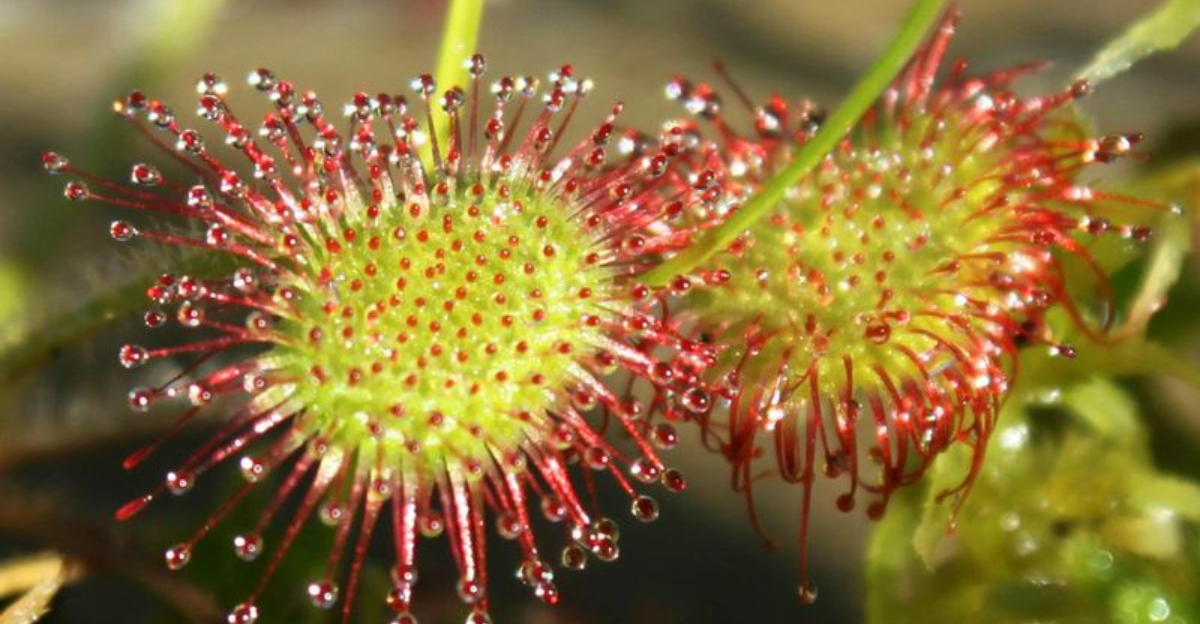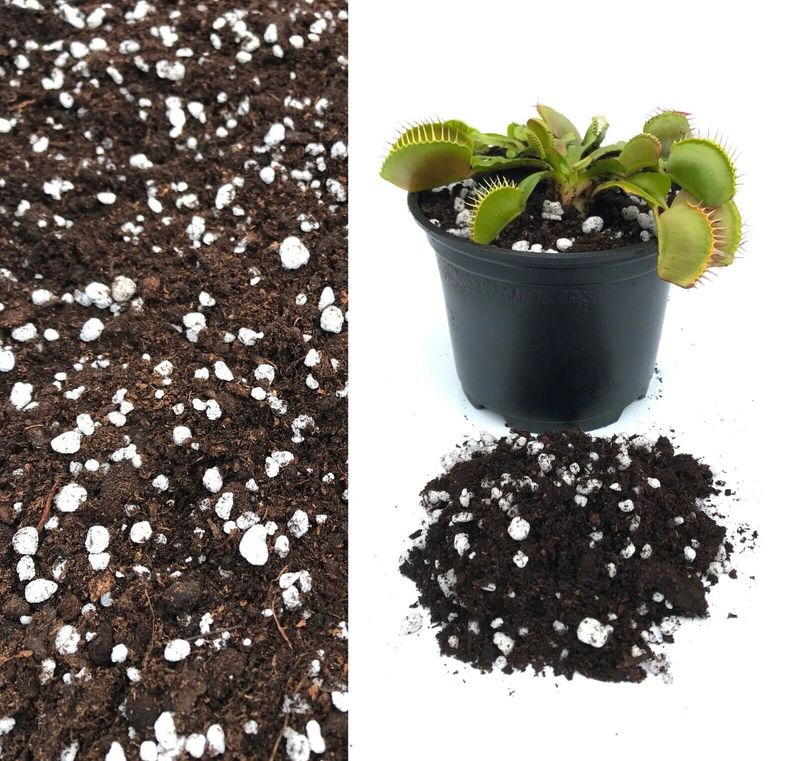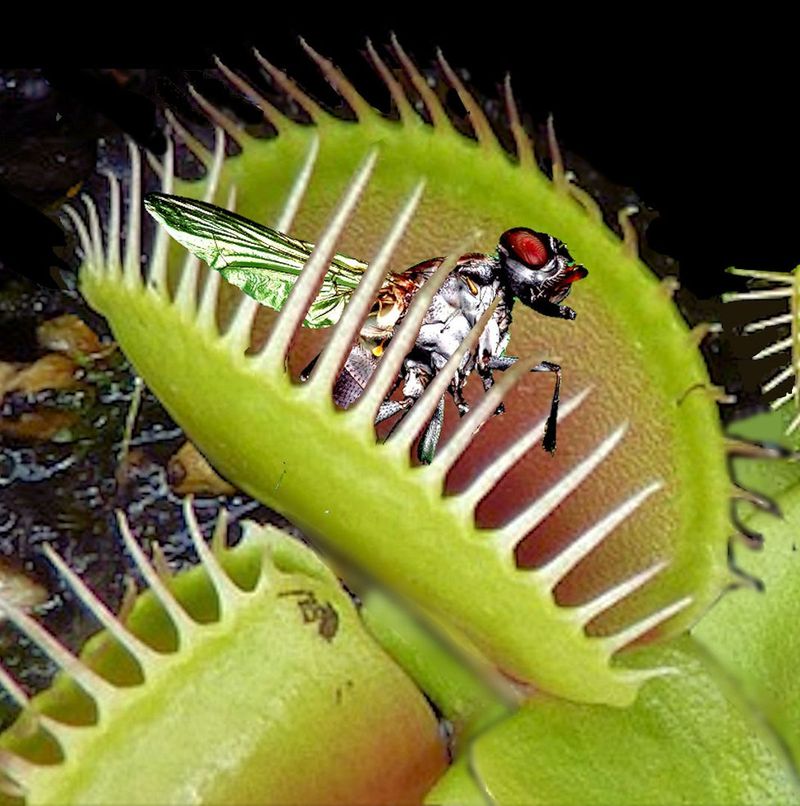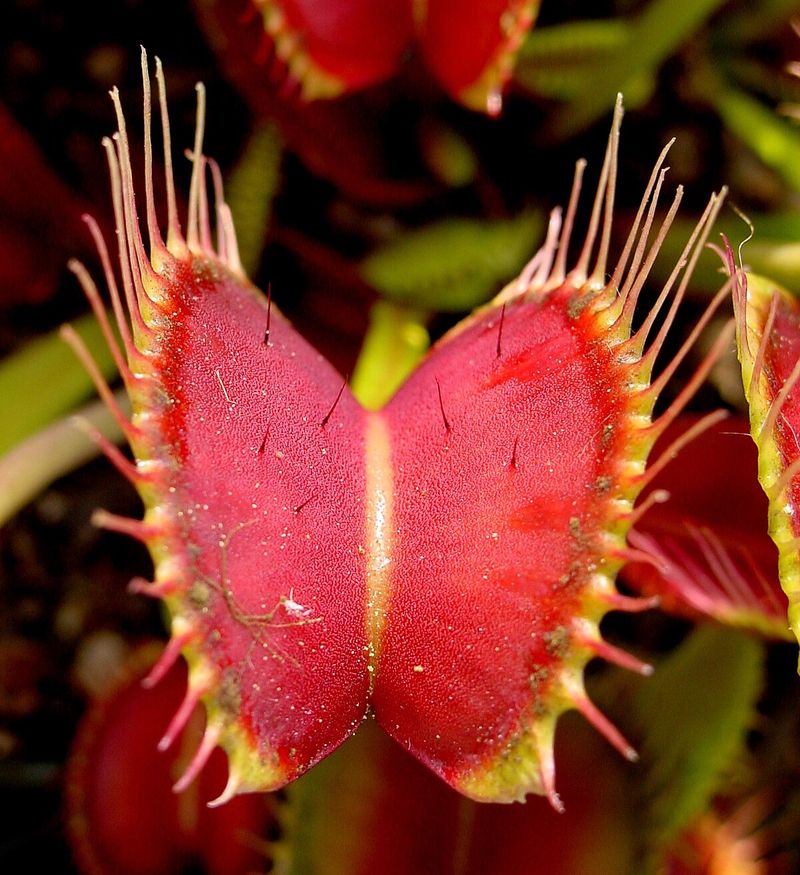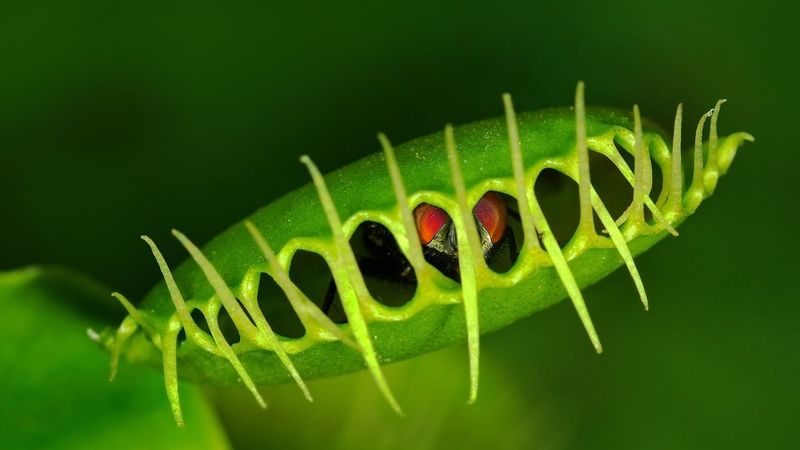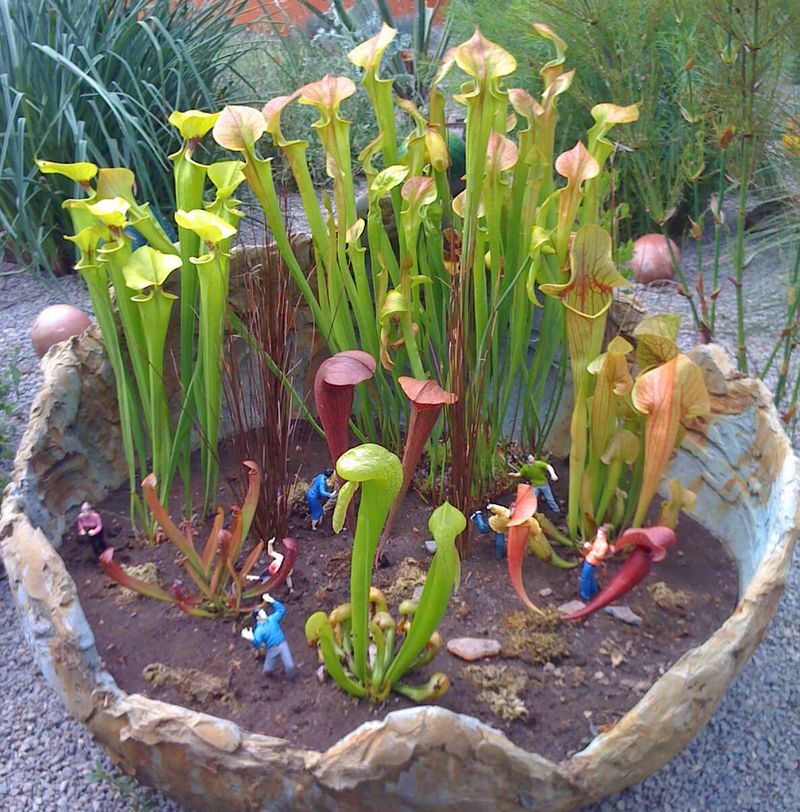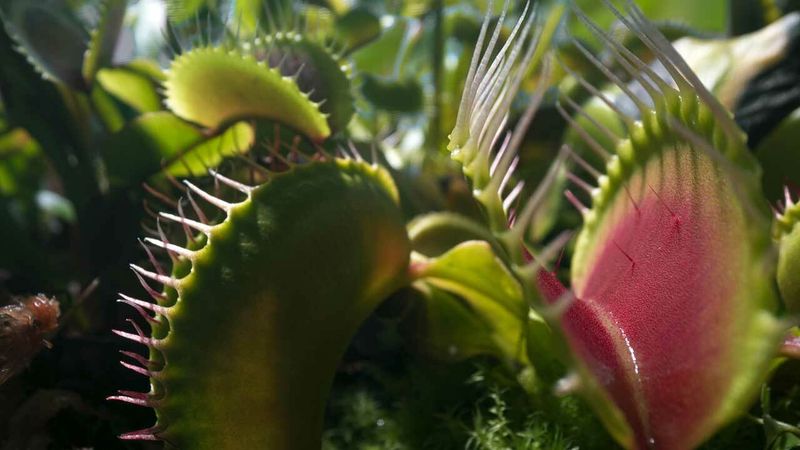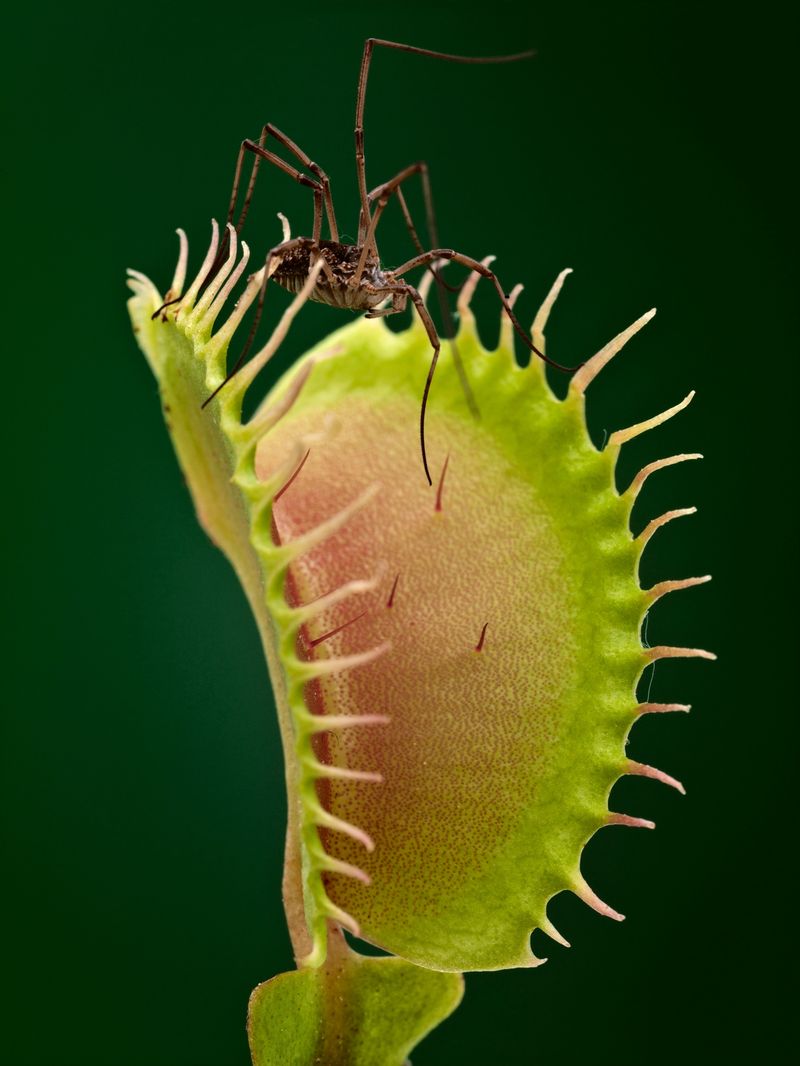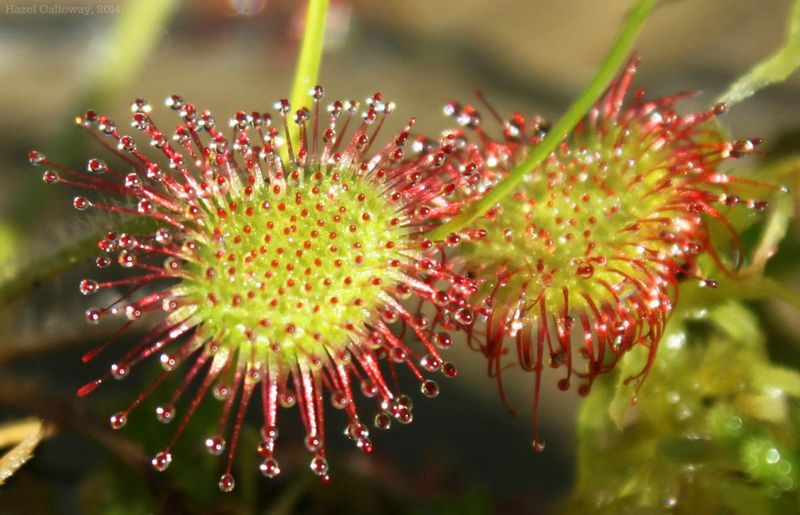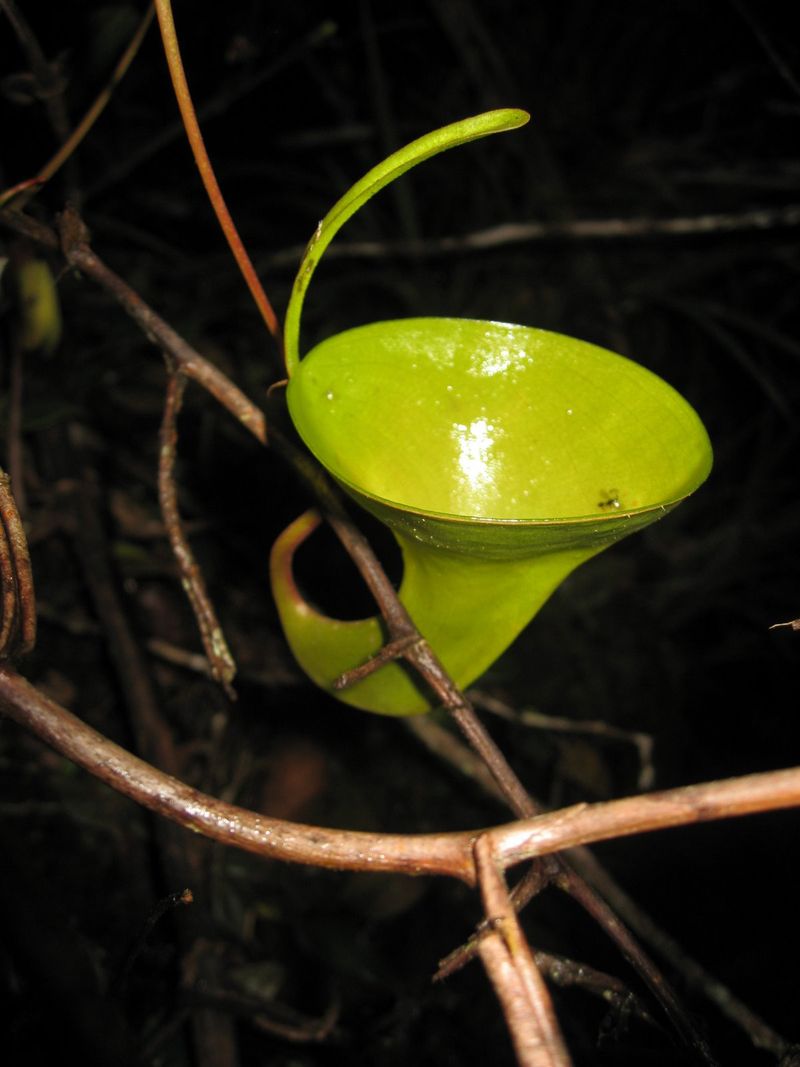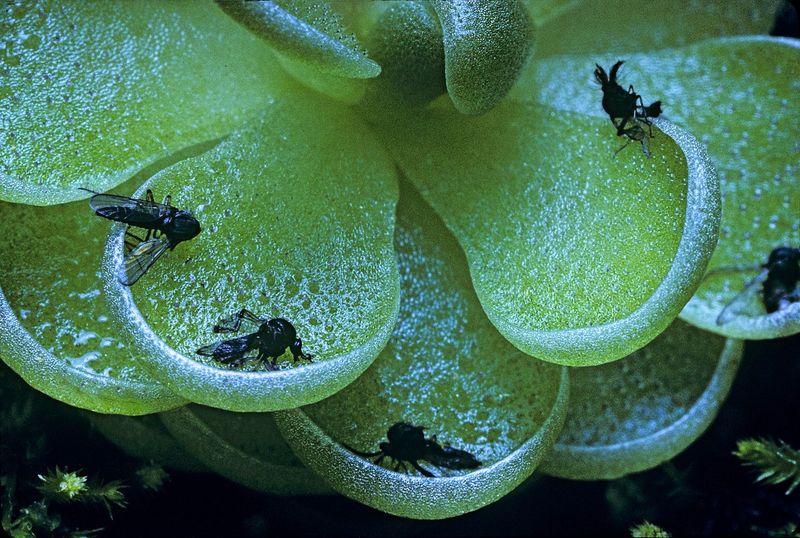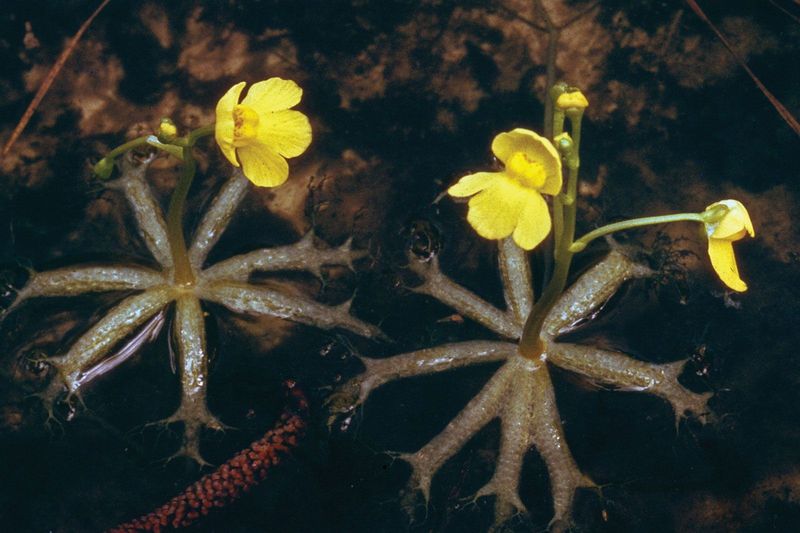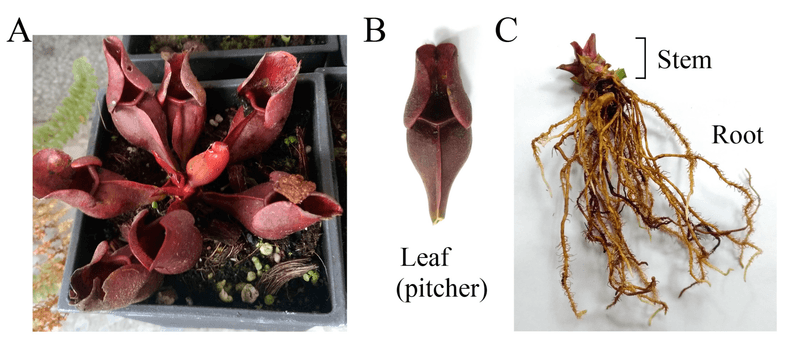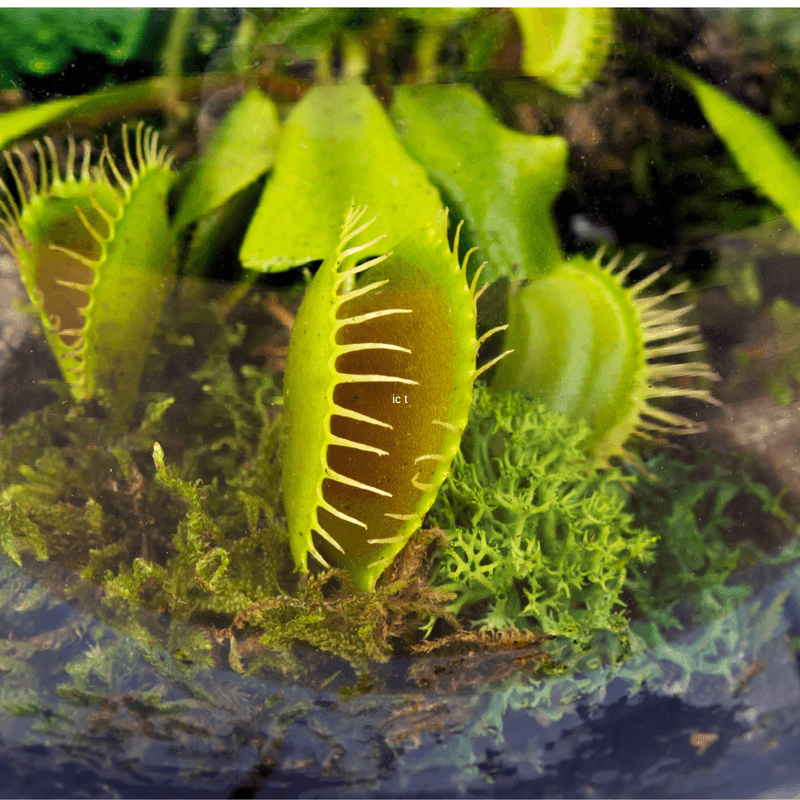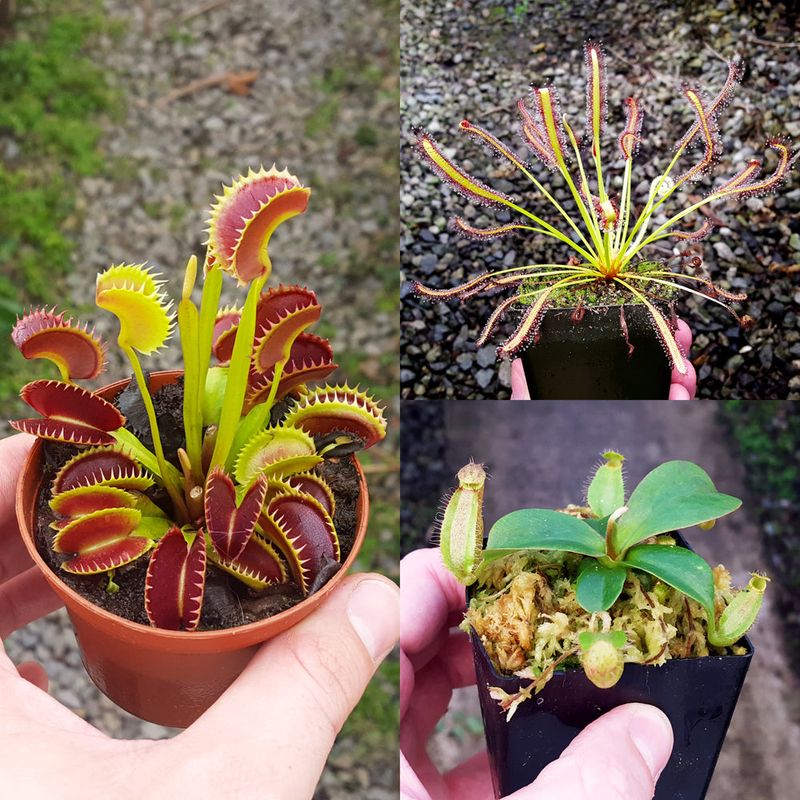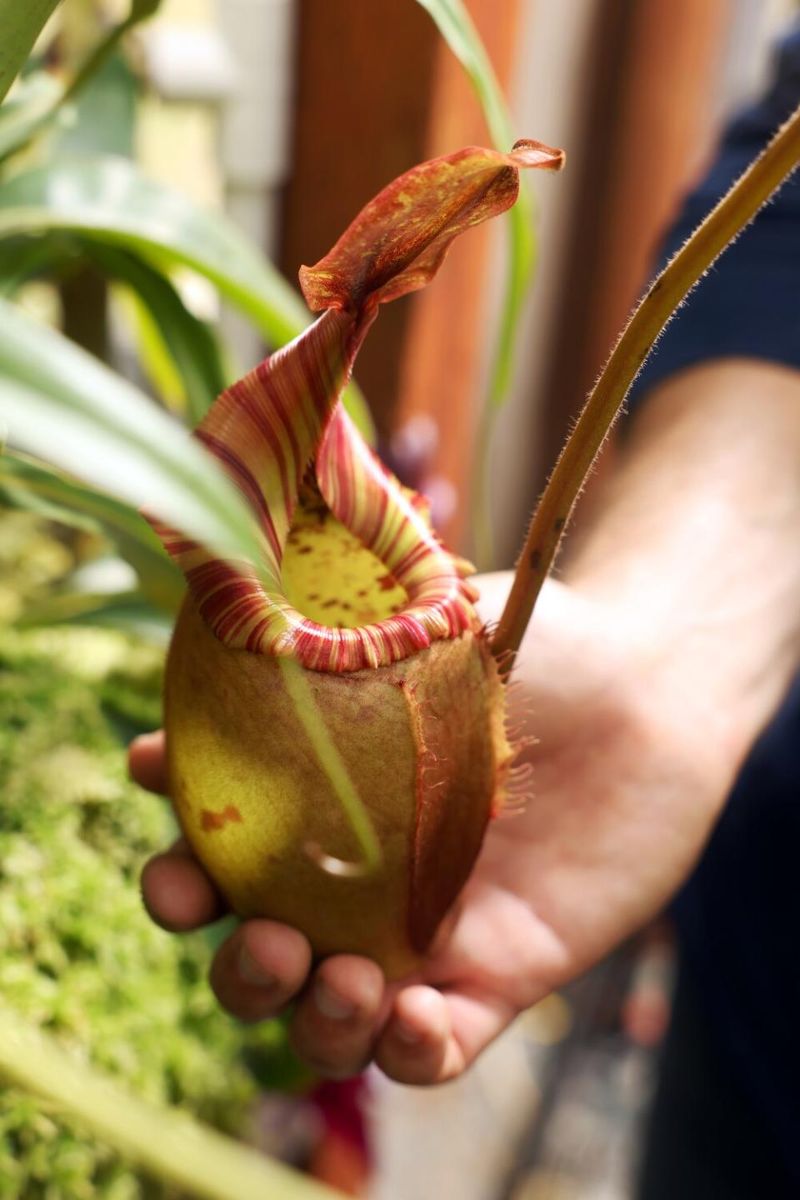Carnivorous plants are incredible marvels of nature, captivating enthusiasts and botanists alike with their unique adaptations.
Found in nutrient-poor environments, these plants have evolved fascinating mechanisms to trap and digest prey, securing the nutrients they need to thrive.
From Venus flytraps and their intricate movement detection to pitcher plants that lure prey with enticing scents, each species exhibits a unique strategy to survive. These 15 mind-blowing facts will give you a glimpse into the mysterious and awe-inspiring world of carnivorous plants.
1. They Evolved in Nutrient-Poor Soil
Carnivorous plants have developed extraordinary adaptations to survive in nutrient-poor environments like bogs and wetlands. In these harsh conditions, essential nutrients are scarce, pushing these plants to derive nutrients from trapping and digesting prey.
By capturing insects and small creatures, they supplement their nutrient intake. This incredible adaptation allows them to flourish where other plants might struggle. Such evolutionary marvels showcase the resilience and ingenuity of nature.
By adapting to their unique environment, carnivorous plants have carved a niche that enables them to thrive in some of the most challenging habitats on Earth.
2. They Trap Insects in Different Ways
Carnivorous plants employ diverse mechanisms to trap their prey. Some, like the pitcher plant, use pitfall traps where insects fall into a pool of digestive enzymes. Others, like the Venus flytrap, utilize snap traps that close rapidly upon detecting prey.
Sticky traps, used by sundews, involve sticky tentacles that ensnare insects. Suction traps, found in bladderworts, create a vacuum to suck in unsuspecting prey.
Each method is uniquely suited to the plant’s environment, making these adaptations among the most fascinating in the plant kingdom. This diversity highlights the remarkable ingenuity in nature’s design.
3. Venus Flytraps Count Their Prey’s Movements
The Venus flytrap is renowned for its remarkable ability to count. Tiny hairs inside its traps detect movement, and the plant only snaps shut if these hairs are triggered twice within a span of seconds.
This ensures that random debris doesn’t trigger unnecessary closures. Once closed, the trap forms an airtight seal, beginning the digestion process. The precision of this mechanism illustrates the plant’s efficiency in conserving energy for capturing suitable prey.
Such intricate counting ensures that the Venus flytrap is one of the most efficient carnivorous plants, optimized for survival in its native habitat.
4. Some Can Digest Small Animals
Certain large species of carnivorous plants, like the Nepenthes or tropical pitcher plants, have been documented capturing and digesting small animals such as frogs and rodents.
These plants possess large pitchers filled with digestive fluids, capable of breaking down larger prey. This adaptation allows them to extract essential nutrients from sources unavailable to other plants.
While insects are their primary diet, the ability to digest small animals showcases the extraordinary versatility of these plants. Such capabilities highlight their role in maintaining ecological balance by controlling the populations of various small creatures in their environment.
5. They Rely on Rainwater or Distilled Water
Carnivorous plants are highly sensitive to the minerals and chemicals found in tap water. To ensure their health, they rely on pure rainwater or distilled water, which lack harmful substances.
These plants have evolved to thrive in nutrient-poor conditions, making their water requirements unique. By using pure water, enthusiasts can simulate their natural environment, promoting growth and health.
Failing to provide the right type of water can be detrimental to these delicate plants. Understanding this necessity is crucial for anyone looking to cultivate and maintain thriving carnivorous plants in home or garden settings.
6. They Have Symbiotic Relationships
Some carnivorous plants engage in symbiotic relationships with various insects. For instance, certain pitcher plants offer shelter to ants, which in return, aid in the digestion of trapped prey.
These insects benefit from a safe habitat and a steady food supply, while the plant gains assistance in breaking down nutrients. This mutually beneficial relationship highlights the complexity of ecological interactions.
Such symbiosis not only enhances the plant’s ability to secure nutrients but also contributes to the overall health of the ecosystem. These partnerships are a testament to the remarkable interconnectedness of life.
7. They Don’t Rely on Insects for Energy
Despite their carnivorous nature, these plants still perform photosynthesis, capturing sunlight to produce energy. Trapping insects supplements their diet with essential nutrients like nitrogen, which are scarce in their environment.
This dual strategy allows them to thrive in challenging conditions, balancing energy production and nutrient acquisition. While prey provides necessary sustenance, photosynthesis remains the primary source of energy.
This combination showcases their adaptability and efficiency, enabling survival in nutrient-poor habitats. By understanding this balance, one can appreciate the evolutionary strategies that make carnivorous plants successful in their unique ecological niches.
8. Sundews Can Move Their Tentacles
Sundews (Drosera species) are fascinating carnivorous plants known for their ability to move. When an insect becomes ensnared in their sticky tentacles, the sundew’s tentacles begin to curl around the prey.
This movement maximizes contact, enhancing the absorption of nutrients. The tentacles secrete a glue-like substance that traps insects, ensuring they are efficiently digested. This dynamic response to prey highlights the sundew’s active role in capturing food.
Such movement is rare among plants, making sundews an intriguing subject for study and admiration. Their actions demonstrate the incredible adaptability of carnivorous plants.
9. Pitcher Plants Create Their Own Digestive Fluid
Pitcher plants are equipped with their own digestive systems, producing a specialized fluid within their pitchers. This liquid serves to break down prey, allowing the plant to absorb vital nutrients.
The fluid’s composition is tailored to dissolve insects and other small creatures that fall into the pitcher. This self-sufficiency reduces the plant’s reliance on external factors, showcasing a highly efficient method of nutrient acquisition.
By producing their own digestive enzymes, pitcher plants can thrive in environments where other plants might falter. The intricate design of these plants underscores nature’s ingenuity in overcoming environmental challenges.
10. Butterworts Use Sticky Leaves to Trap Prey
Butterworts are unique among carnivorous plants due to their sticky leaves that trap unsuspecting insects. The leaves secrete a glue-like substance that attracts and adheres to small prey. Once trapped, the leaves roll slightly to enhance digestion, absorbing nutrients from the captured insects.
This passive trapping method is highly effective, allowing butterworts to thrive in nutrient-poor soils. Their ability to lure and digest prey with minimal movement exemplifies the diverse adaptations of carnivorous plants.
This adaptation ensures they obtain the necessary sustenance to grow in challenging environments, displaying a fascinating aspect of plant evolution.
11. Bladderworts Have the Fastest Traps
Bladderworts are aquatic carnivorous plants famed for their rapid traps. Their suction traps, located underwater, snap shut in less than a millisecond, capturing prey like tiny aquatic organisms.
This speed is among the fastest in the plant kingdom, enabling bladderworts to efficiently capture and digest food in their environment. The traps create a vacuum that draws in unsuspecting prey, showcasing a remarkable adaptation to aquatic life.
This rapid response is a marvel of evolutionary engineering, allowing bladderworts to secure nutrients swiftly. Their speed and efficiency make them one of the most unique carnivorous plants.
12. They’ve Been Used for Medicine
Carnivorous plants, such as butterworts, have a history of medicinal use. Historically, they were employed to treat infections and other ailments. The sticky secretions from butterworts were believed to possess antibacterial properties, making them valuable in traditional medicine.
This application highlights an intriguing intersection between botany and human health. While modern medicine has largely replaced these traditional uses, the historical significance of carnivorous plants in herbal remedies remains a fascinating aspect of their story.
These medicinal properties reflect the diverse benefits these plants offer beyond their ecological roles.
13. They Can Live for Decades
With proper care, certain species of carnivorous plants can live for decades, making them a long-term commitment for enthusiasts. These plants require specific conditions to thrive, such as adequate sunlight, water, and prey.
When these needs are met, they can flourish for 20 years or more, offering a unique opportunity to observe their fascinating lifecycle over time. This longevity underscores their resilience and adaptability, providing ample time for study and enjoyment.
For those interested in cultivating carnivorous plants, understanding their needs is essential to ensure they reach their full potential and live long, healthy lives.
14. They Are Found on Every Continent Except Antarctica
Carnivorous plants have conquered almost every continent, thriving in diverse climates from tropical rainforests to temperate regions. Their absence in Antarctica is due to the extreme cold and lack of suitable growing conditions.
This global distribution illustrates their incredible adaptability, allowing them to occupy various ecological niches. By understanding their habitat preferences, enthusiasts can better cultivate these plants in different environments.
Their widespread presence is a testament to their evolutionary success, showcasing an ability to adapt and flourish in varied settings, each with its own unique challenges and opportunities for growth.
15. Some Nepenthes Species Smell Like Fruit or Honey
Certain Nepenthes species have evolved to emit scents resembling fruit or honey, luring insects into their traps. This olfactory adaptation enhances their ability to attract prey, increasing their chances of securing a meal.
The sweet aroma is irresistible to many insects, drawing them to their doom. This strategy showcases the multifaceted approaches carnivorous plants use to survive and thrive.
By understanding these scent-based adaptations, one gains insight into the complex interactions between plants and their environment. This sweet deception is yet another example of the innovative mechanisms that define carnivorous plants.
